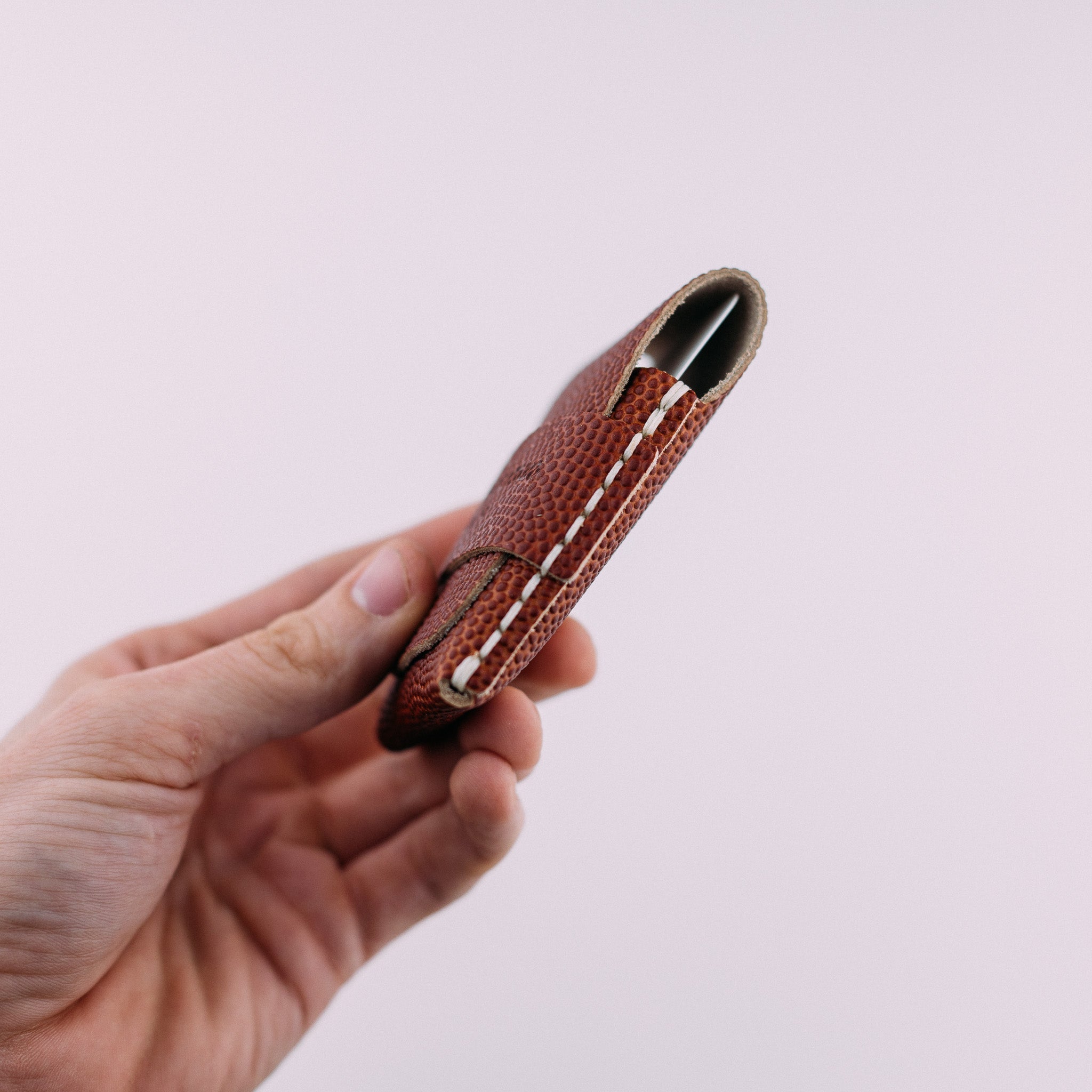
Hand Stitching vs Machine Stitching in Leathercraft
Pick up a leather wallet, belt, or catch-all tray, and you’ll likely notice the material first, the grain, the smell, the color. But look closer, and you’ll see the true backbone of the piece: the stitching. The way leather is joined defines not only how it looks but how it lives. A seam is more than a thread through hide; it’s a choice between two philosophies: hand sewing leather with centuries-old tradition, or machine sewing leather with modern efficiency.
Each method has strengths, trade-offs, and even cultural weight in the leathercraft world. Understanding the difference is key for anyone choosing or creating high-quality leather goods.
The Enduring Appeal of Hand Stitching
There’s something deeply human about a hand-sewn seam. Long before electricity or industrial machines, every saddle, pair of boots, and wallet was crafted with nothing but awls, needles, and time. That legacy still lives today in the work of artisans who choose hand stitching not out of necessity, but because of what it represents.
Hand stitching is deliberate. Every needle pull requires focus. Every pass of the thread reflects intention. It produces seams with a slightly raised, tactile quality, strong, rhythmic, and unmistakably crafted by human hands.
Take The Franklin Wallet, for instance. Its seams are not only functional but also a visual testament to the hours of care invested. This kind of detail connects you directly to the maker and elevates the wallet beyond utility, into something closer to art.
Why the Saddle Stitch Matters
At the heart of hand sewing leather is the saddle stitch, a method prized for both beauty and strength. Here’s why it stands apart:
-
Two Needles, One Thread: Each stitch crosses through the same hole from opposite directions, locking securely in place.
-
Independent Strength: If one stitch breaks, the seam holds, because every stitch is locked individually.
-
Durability: Unlike the chain reaction of a machine seam unraveling, saddle stitching remains intact, even under decades of stress.
This is why a hand-stitched wallet or Catch-All Tray can outlast not just years, but decades. For high-stress points, belt holes, wallet corners, or bag handles, nothing compares to the dependability of a true saddle stitch.
The Power of Machine Stitching
If hand stitching embodies tradition, machine sewing leather represents the modern reality of efficiency. With a high-quality leather sewing machine, a process that could take hours is reduced to minutes. That speed makes it indispensable for brands scaling production or serving a growing audience.
But efficiency doesn’t mean carelessness. Machine stitching provides:
-
Uniformity: Perfectly spaced stitches every time.
-
Consistency: Same tension and strength across hundreds of pieces.
-
Polish: A sleek, professional look that appeals to modern minimalism.
This is especially valuable for collections where visual consistency matters, such as our Wallets Collection, where customers expect identical quality no matter which style they choose.
How the Lock Stitch Works
Machines rely on a lock stitch, created when a top thread meets a bobbin thread beneath the leather. It’s fast and efficient, but it comes with one drawback: if the top thread snaps, the whole seam can begin to unravel.
That said, with strong threads and well-maintained equipment, machine seams are still highly reliable. For broad items like belts or straps, where stress is evenly distributed, the strength of the leather itself often matters more than the stitch. A solid machine seam paired with full-grain hide and a dependable buckle, like in The Belt, creates a piece built to endure years of daily wear.
Blending the Old and the New
In practice, many skilled leatherworkers don’t strictly choose one method over the other. They combine both. This hybrid approach leverages machine efficiency for long, straight seams while preserving the unmatched durability of hand stitching for stress points and fine details.
-
A bag’s body might be sewn by machine.
-
Handles, stress points, and closures could be reinforced by hand.
-
Wallets may feature machine-stitched interiors but hand-stitched exteriors.
This balanced method respects tradition while meeting modern business demands. It’s why products like the Vertical Dutchman feel both refined and resilient, crafted with intention, not shortcuts.
Choosing a Philosophy: What’s Right for You?
Your preference between hand sewing leather and machine sewing leather depends on what you value most:
-
The Artisan Approach: Hand stitching means heritage, meditative slowness, and heirloom durability. Perfect for bespoke items or when storytelling is as important as function.
-
The Production Approach: Machine stitching means scale, speed, and accessibility. Essential for growing brands meeting high demand without compromising quality.
-
The Hybrid Approach: A blend offers the best of both, efficiency where possible, tradition where it counts.
At Lost Dutchman Leather, every decision about stitching is guided by our commitment to quality. Whether a wallet, keyring, or belt, our goal is to create goods that last a lifetime, not a season.
Beyond the Stitch: Why It Matters
At first glance, stitching may seem like a small detail. But in truth, it’s what holds the soul of the craft together. The stitch defines not just strength, but philosophy. Do you want a product that celebrates heritage? One that scales with modern demands? Or one that bridges the two?
That choice shapes not only the item in your hand but the values behind the brand you support.
Final Thoughts
Both hand and machine stitching have earned their place in leathercraft. The beauty of this craft is that you don’t need to view them as opposites. They’re different languages telling the same story: how to join leather in a way that lasts.
If you’d like to learn more about how our goods are crafted, or if you’re curious about which approach was used in a specific wallet, belt, or accessory, we’re always here to answer your questions. Just get in touch, and our team will be glad to share more about the techniques behind every piece.
